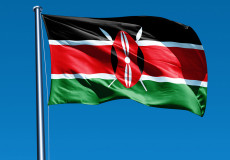- The Kenyan government prioritises disaster response rather than disaster risk reduction.
Kenya, a country plagued by cyclic disasters such as floods, wildfires, and droughts, grapples with these events' alarming frequency and intensity.
The lack of adequate preparation and capacity for response leaves the nation vulnerable and ill-prepared.
One of the key points to consider is that disaster preparedness should not be a one-time affair triggered solely by catastrophic events.
Unfortunately, the Kenyan government prioritises disaster response rather than disaster risk reduction.
This reactive approach comes at a high cost in economic terms and the loss of human lives. It is far more expensive to deal with the aftermath of a disaster than to prevent it altogether.
Read More
The root cause of this costly cycle lies in poor planning and implementation of preventive measures. Instead of learning from past occurrences, the government often adopts a passive stance, waiting until another disaster strikes before taking action.
This lack of proactive planning exacerbates the impact of disasters and hinders the effective allocation of resources.
Kenya has made strides in disaster risk management with the enactment of the 2010 constitution. The constitution stipulates the roles of the national government and county governments in responding to disasters.
It also paves the way for implementing policies such as the National Disaster Risk Management Policy and County Disaster Risk Management Policies.
These frameworks integrate disaster risk management into planning and budgeting processes, providing a foundation for effective disaster preparedness.
To break free from the cycle of reactive response, the Kenyan government must prioritise investments in infrastructure for water management, early warning systems, and disaster response.
This includes maintaining and improving drainage systems to mitigate flooding, reinforcing flood-prone areas to minimise damage, and educating communities on emergency procedures.
Early warning systems are crucial in alerting citizens and relevant agencies, enabling swift coordination and response during the rainy season.
Regular monitoring of weather patterns and timely communication with the public are essential components of effective disaster preparedness.
By closely monitoring changing weather conditions, authorities can anticipate and respond to potential disasters more efficiently. Timely and accurate communication with the public empowers individuals and communities to take necessary precautions, reducing the overall impact on citizens.












